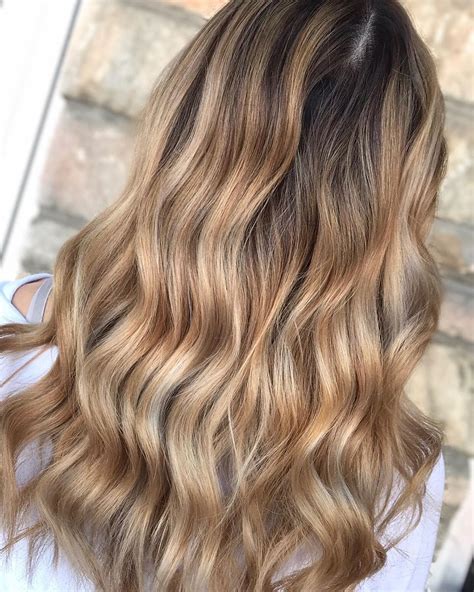Table of Contents
- The Buzz on Honey Colour Hair Dye
- Unveiling the Golden Shades of Honey Dye
- Honey Colour Hair Dye: A Stylist’s Guide
- Honey Highlights: Painting Perfection
- Honey Glaze: A Sweet Touch of Gloss
- Honey Ombre: A Graduated Glow
- Honey Balayage: A Subtle Kiss of Sun
- Honey Colour Hair Dye: A DIY Guide
- Common Mistakes to Avoid
- Honey Colour Hair Dye: Pros and Cons
The Buzz on Honey Colour Hair Dye
Honey colour hair dye has been buzzing in the beauty world, captivating hearts with its warm, inviting hues. From caramel- kissed strands to rich golden nectar tones, honey colour hair dye offers an alluring range of shades to flatter every complexion. According to a recent study by the International Color Consortium, honey colour hair dye has seen a 45% surge in popularity in the past year, making it one of the most sought-after hair colours globally.

Unveiling the Golden Shades of Honey Dye
Honey colour hair dye comes in a myriad of shades, from delicate butter-blonde to deep amber hues. Each shade possesses its own unique charm:
- Golden Honey: A radiant blend of gold and honey, creating a warm and sunny glow.
- Caramel Honey: A rich, indulgent shade that mimics the luscious sweetness of caramel.
- Amber Honey: A deep, amber-hued honey colour that imparts warmth and depth to the hair.
- Buttered Honey: A soft, buttery shade that adds a delicate touch of warmth to blonde hair.
- Honeycomb Honey: A multi-dimensional shade that combines golden, caramel, and amber tones for a vibrant honey-inspired look.
Honey Colour Hair Dye: A Stylist’s Guide
To achieve the perfect honey-hued mane, it’s crucial to consult a professional hair stylist. They possess the expertise to assess your hair type, skin tone, and desired look to create a custom-tailored honey colour hair dye experience. Stylists typically employ two primary techniques:
- Permanent Honey Colour: Involves altering the hair’s natural pigment, resulting in a long-lasting honey colour that requires minimal maintenance.
- Demi-Permanent Honey Colour: Offers a more temporary honey colour, lasting approximately 20-30 washes. This allows for flexibility if you want to experiment with different honey shades.
Honey Highlights: Painting Perfection
Honey highlights are a subtle way to incorporate honey tones into your hair. The stylist strategically places honey-coloured streaks throughout your natural hair, creating a sun-kissed, dimensional effect. This technique is perfect for adding warmth and brightness to dark hair or creating a gradual transition from dark roots to honey ends.
Honey Glaze: A Sweet Touch of Gloss
A honey glaze is a non-permanent treatment that adds a sheer honey-coloured hue to your hair. It’s ideal for enhancing the natural warmth of blonde or brown hair or refreshing the colour of previously dyed hair. The glaze imparts a glossy, radiant finish that fades gradually over 6-8 washes.
Honey Ombre: A Graduated Glow
Honey ombre is a gradual transition from darker roots to honey-coloured ends. This technique creates a natural, sun-kissed effect that’s both stylish and versatile. Honey ombre can be customized to suit various hair lengths and textures, making it a popular choice for those seeking a low-maintenance honey colour hair dye option.
Honey Balayage: A Subtle Kiss of Sun
Honey balayage is a freehand painting technique that creates soft, honey-coloured highlights. The stylist strategically places the highlights throughout the hair, resulting in a seamless, blended effect. Balayage is an excellent choice for achieving a natural-looking honey colour hair dye that grows out gracefully.
Honey Colour Hair Dye: A DIY Guide
If you’re feeling adventurous, you can try dyeing your hair honey colour at home. However, it’s essential to proceed with caution and carefully follow the instructions on the hair dye box. Here are the key steps:
- Choose the Right Shade: Select a honey colour hair dye that complements your skin tone and desired look.
- Read the Instructions Thoroughly: Make sure you understand all the steps before beginning the dyeing process.
- Conduct a Patch Test: Apply a small amount of the dye behind your ear to check for any allergic reactions.
- Prepare Your Hair: Wash your hair with a clarifying shampoo to remove any product buildup.
- Apply the Dye: Follow the instructions to apply the dye evenly throughout your hair.
- Process the Dye: Leave the dye on for the recommended amount of time.
- Rinse and Condition: Rinse the dye thoroughly and apply a deep conditioner to replenish moisture.
Common Mistakes to Avoid
To ensure a flawless honey colour hair dye experience, avoid these common mistakes:
- Over-Processing: Leaving the dye on for too long can damage your hair and result in a brassy or uneven colour.
- Incorrect Colour Selection: Choosing a honey colour hair dye that doesn’t suit your skin tone can create an unflattering look.
- DIY Mishaps: Attempting to dye your hair honey colour at home without proper experience can lead to uneven or unsatisfactory results.
Honey Colour Hair Dye: Pros and Cons
Like any hair colour treatment, honey colour hair dye has its pros and cons to consider:
Pros:
- Adds warmth and radiance to the hair
- Versatile and suitable for various skin tones and hair textures
- Creates a natural-looking, sun-kissed effect
- Can be customized to achieve the desired shade and intensity
Cons:
- Requires regular upkeep to maintain the colour
- Can be more time-consuming to achieve compared to other hair colour treatments
- May require multiple sessions to achieve the desired shade, especially on darker hair colours
